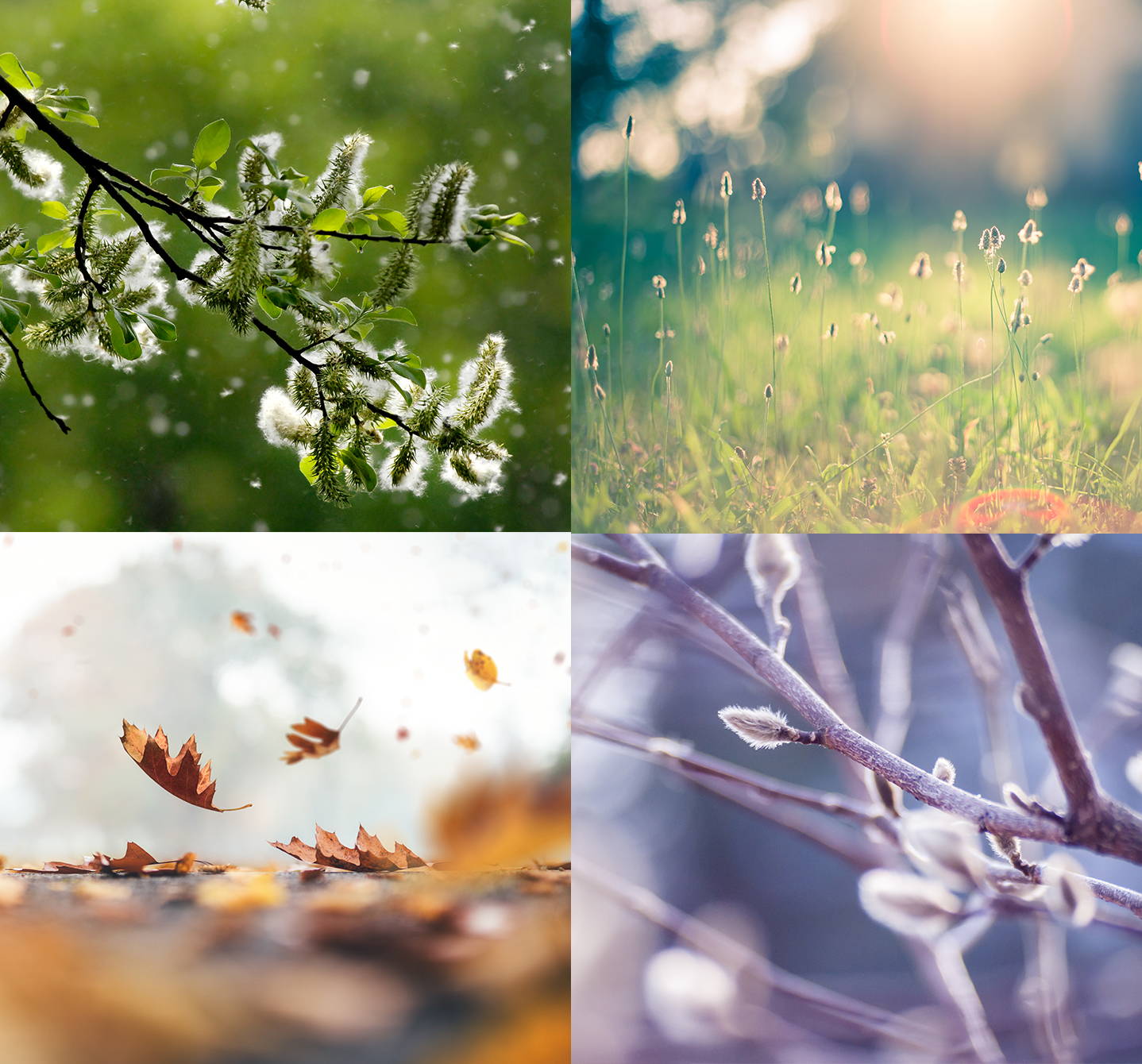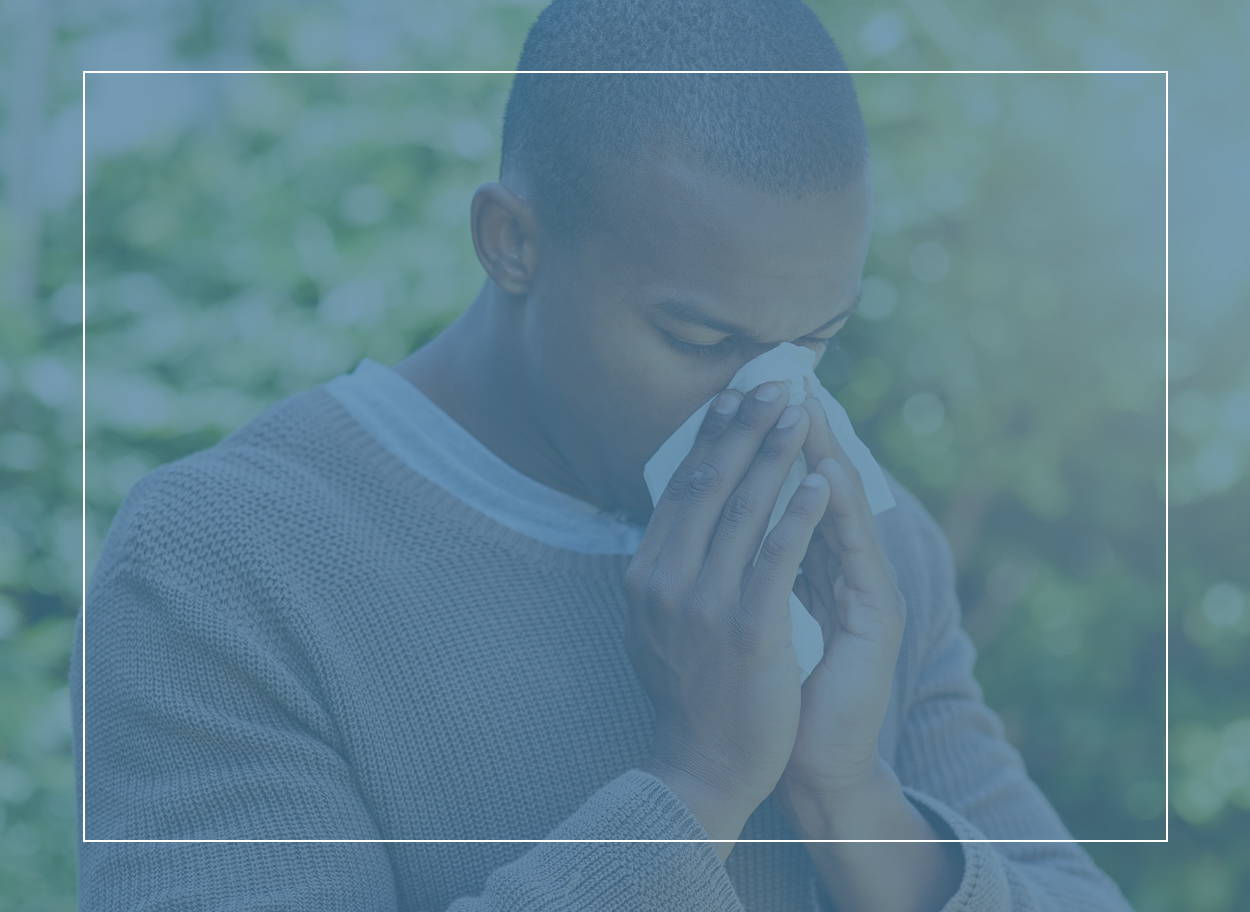Symptoms of seasonal allergies

Seasonal allergies do just what you’d expect; they follow the seasons. Symptoms may flare up in the spring, cause nasal congestion all summer or bug you through the fall. Winter is generally a quieter time. The main trigger for the symptoms of seasonal allergies is pollen. Plants release it to make new plants. And cold weather puts a freeze on all that reproduction.
Pollen isn’t the only part-time allergen. Mold allergy can be seasonal too. And then there are seasonal lifestyle factors. Things many people do at certain times of the year that can aggravate their allergies.
Read on to find out what could be influencing your personal allergy calendar. And what you can do about the triggers and symptoms of seasonal allergies. We’ll look at treatment options and medications too.
9 symptoms of seasonal allergies
People tend to talk about hay fever. The medical name for many of the signs and symptoms of seasonal allergies is allergic rhinitis. It's an inflammation of the lining of your nose.
Feeling bunged up and sneezing are common symptoms for which you might seek treatment. But you could get any of these in any combination:
- Stuffy nose (nasal congestion)
- Runny nose, usually with clear fluid
- Sneezing
- Itchy nose
- Itchy, red or watery eyes
- Post-nasal drip (the feeling of mucus moving down the back of your throat)
- Cough
- Tight chest or wheezing
- Sinus inflammation/pain

Starting school can be an even bigger step than usual for children with allergies. And for parents. It means trusting someone else to help your child manage their symptoms
Symptoms of seasonal allergies can range from mild to severe. The distinctive thing about them is they tend to happen outdoors.
What triggers symptoms of seasonal allergies?
Plants release thousands of tiny pollen grains every season. The fine dust travels on the wind, often very long distances, to fertilize other plants of the same species. You won't even know you're breathing in these allergy triggers until you get hay fever symptoms.
Mold spores are windborne allergens too. Many are even tinier than pollen grains. Exposure can cause the same symptoms of seasonal allergies.
(You might say insect venom allergies are seasonal too. Stinging bees, wasps, hornets, fire ants and yellow jackets tend to be most bothersome from late spring to early fall. Find out more here.)
How do symptoms of seasonal allergies start?
The harmless pollen or mold spores get into your nasal passages, sinuses, airways and eyes. Your immune system spots them and thinks your body is under attack. So it tries super hard to get rid of the intruder, as it would if you had a virus or a parasite. Which is why your nose may stream and your eyes get all teary. And that’s an allergic reaction.

Skin prick allergy tests:
a simple guide
Symptoms of seasonal allergies: It’s all about the timing
Plants that cause hay fever fall into three groups. Tree allergens tend to peak in the spring, grasses in the summer and weeds in the autumn. It isn't as neat as that, of course. The seasons overlap. How much depends on where you live. In places that are never really cold, grass pollen and mold spores can be in the air almost all year round.
Summer and fall are when outdoor molds tend to cause allergic reactions. Cold weather puts these species on stand-by. Until the cycle starts all over again in the spring.
Does weather affect the symptoms of seasonal allergies?
It is a big factor. For instance, dry warm breezy weather is likely to bring high pollen and mold counts. And symptoms of seasonal allergies. Cool, damp, rainy days usually mean less pollen in the air. But some mold loves dew and fog.
Weather variations from year to year can have an effect too. The pollen count in Raleigh, North Carolina, and parts of Florida was much lower in spring 2019 after Hurricanes Florence and Michael the year before.
Pollination is already starting earlier for some plants and going on longer due to climate change. High carbon dioxide levels also seem to make pollen and mold spores more prolific and allergenic.
Could I have hay fever from several seasonal allergies?
Yes, you could. Over half of all people with allergies are sensitive to more than one allergen. The immune system goes on developing throughout your life. You may add new sensitivities over time. That could give you a longer personal pollen season if your allergies span different plants.
Cross-reactions between plants can also give you symptoms of seasonal allergies. Say you're allergic to birch, then alder might get you sneezing too. It's because the pollen of the other plant contains proteins similar to those in your trigger allergen.
If you react to ragweed, as around 15% of Americans do, then sunflowers, chrysanthemums and daisies may cause symptoms of seasonal allergies too.
Symptoms of seasonal allergies…at lunch
Not just lunch, but breakfast, supper and all the snacks between, potentially. Local reactions in your mouth, lips or throat when you eat could be your seasonal allergies too. It's a cross-reaction called pollen food syndrome or oral allergy syndrome. Your body gets confused by proteins in certain fruit and vegetables that look like your trigger. You may find it happens more at the time of year when you get symptoms of seasonal allergies.

Free hay fever app
Daily pollen, weather and air quality data for where you are, and personalised allergy info. All on your phone.
Seasonal lifestyle factors that can aggravate allergies
Ever found yourself with shortness of breath after a pool party or toasting marshmallows? Chlorine and wood smoke are both irritants. They can sensitize your airways and make symptoms of seasonal allergies worse. So it may be wise to tailor your summer social life to avoid them.
Another sneezy moment on some people’s allergy calendar is Christmas – when they bring home the tree. Don’t blame the festive pine though. The scent from the leaves may be an irritant. But it’s more likely to be mold on the Christmas tree that causes any symptoms of seasonal allergies. Stand it somewhere inside but out of the way for a few days. Then give it a shake before decorating.
Getting a diagnosis for symptoms of seasonal allergies
Your healthcare provider is likely to ask you about your seasonal allergy symptoms, how long they go on for and where they happen. Check the pollen levels on the day your hay fever starts and whenever you get it after that. Knowing what's in the air may help narrow down the cause of your seasonal allergies.
Allergy testing can also help your healthcare provider work out what’s going on. That includes whether you could have low level perennial allergies too. Perennial means they can strike at any time throughout the year. You may be reacting to indoor allergens like pet dander, dust mites or mold without realising it. Your problem plant starts flowering. Now the total allergen load in the air is enough to give you a runny or stuffy nose.

Dust mite
allergy symptoms
Symptoms of seasonal allergies or something else?
You’re right, bunged up nasal passages could well be a cold. The signs and symptoms are alike because cold viruses can also give you rhinitis. But a cold tends to build over a few days and last about a week. Symptoms of seasonal allergies flare up suddenly and drag on for as long as your trigger is in the air.
You may also be confused about the symptoms of seasonal allergies and coronavirus. You can check the up-to-date health information about allergies and COVID-19 here.
There are differences in how the two conditions are likely to make you feel. For instance, potential COVID-19 symptoms include body aches. This isn’t usual with seasonal allergies. On the other hand, sneezing is common with hay fever but not COVID-19 . If in doubt about what could be causing your symptoms, take a COVID-19 test.
Managing symptoms of seasonal allergies
Seasonal allergies can have a big impact on your life; if you let them. Allergic rhinitis can make it hard to get a good nights sleep. And that can spoil your day too. You might even have to take time off school or work if you get severe symptoms of seasonal allergies. They can also affect your mental and emotional health.
Start by avoiding exposure to your problem pollen. It’s no good just looking out of the window – the grains are tiny. Try our free allergy app. It gives you lots of useful information: daily pollen levels, local weather and air quality information, as well as a pollen forecast and pollen calendar. You can also log your seasonal allergy symptoms.
7 practical tips to tackle symptoms of seasonal allergies
- A hat and wrap-around sunglasses may stop pollen or mold spores from getting in your eyes when levels are high. Wearing a mask can help reduce hay fever.
- Keep windows and doors closed in pollen season. Or on clear windy days when the mold count is likely to be higher.
- Air your home when pollen levels are low.
- Better not to hang washing outdoors in your allergy season. Many people use a tumble-dryer.
- If you don’t have air conditioning, think about installing it or use HEPA air purifiers.
- Change your clothes when you get home and leave them outside your bedroom.
- Wash your hair before bed.
How can I ease
allergy symptoms?

Relief for the symptoms of seasonal allergies
You might have come across antihistamines and corticosteroids already. Both are tried and tested seasonal allergy medications. They come in different forms from tablets and liquids to nasal sprays and eye drops. Antihistamines block the chemical histamine triggering your symptoms. Corticosteroids can help calm inflammation.
There is no best treatment for allergic rhinitis. The right relief for one person may not work so well for another. In fact research has shown that combination therapy can sometimes be the way to go. For instance, it’s possible to use corticosteroid and antihistamine nasal sprays. Decongestants can also work alongside antihistamines to unblock nasal congestion. But they should only be taken for short periods.
Ask your healthcare provider or pharmacist for advice before taking allergy medications. Or start your search for a doctor here.
Can I stop symptoms of seasonal allergies from starting?
Antihistamines can be used to help keep symptoms in check as well as relief for a runny nose and itchy watery eyes. Check the pollen calendar to see when your particular allergen is likely to fill the air and set you sneezing. Then take your allergy medications from a couple of weeks beforehand.
But that’s still a tactical approach. A long-term strategy for tackling seasonal allergies is immunotherapy. Rather than avoiding your allergy triggers, exposure is the treatment. The goal is to reduce symptoms by desensitizing your immune system over time with regular small doses of the allergen.
Immunotherapy treatment is available for allergies to tree, weed and grass pollen and some mold. Also to insect venom. Your healthcare provider can tell you more.

 Find A Doctor
Find A Doctor